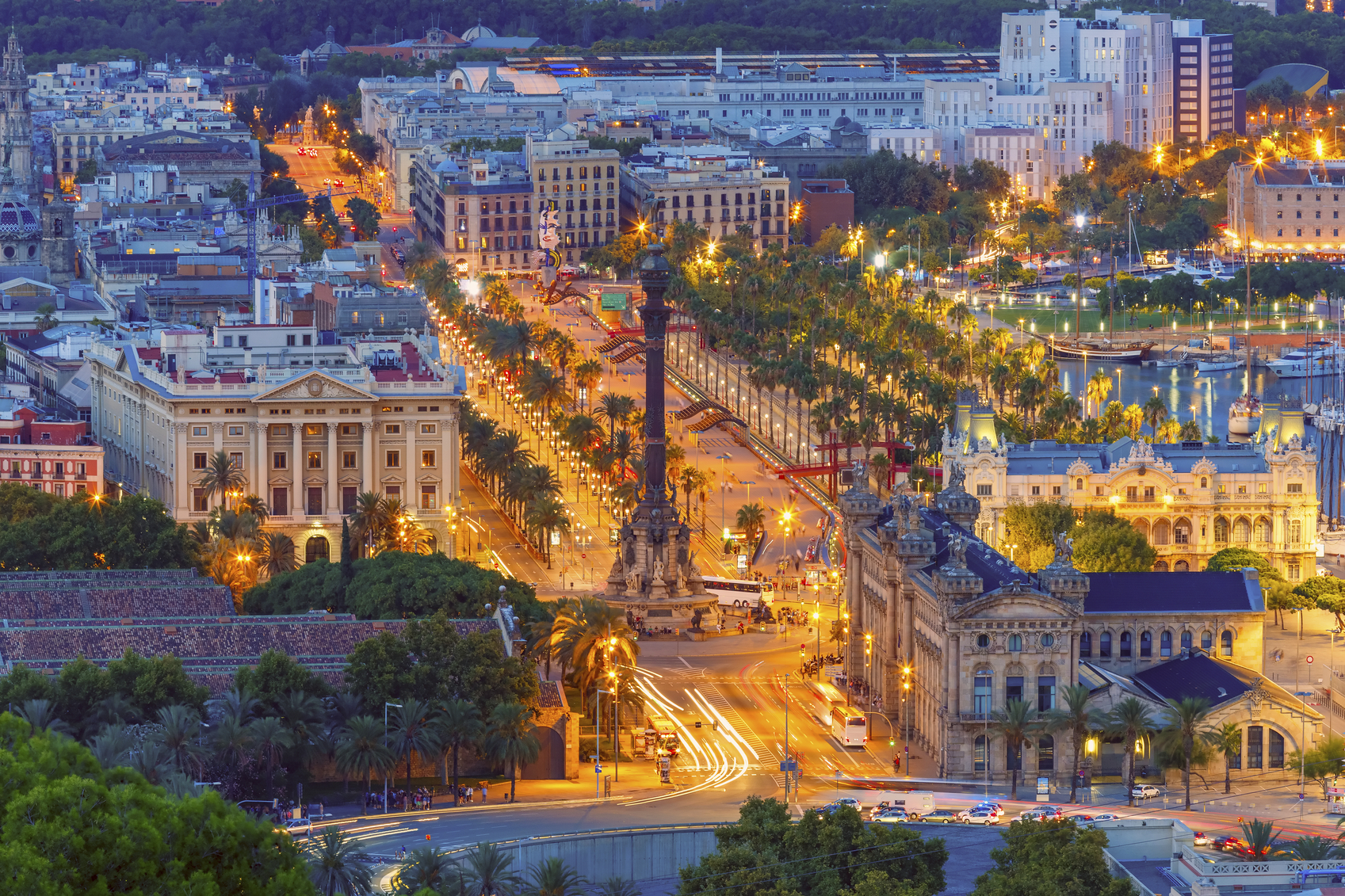How not to do a smart city: Let a thousand flowers bloom instead of having a plan


Barcelona, Spain, is one of the first cities in the world to adopt smart city technology.
Unfortunately for many municipalities, it's all too easy to create a dumb smart city.
The biggest problems occur when proper planning isn't completed before city officials begin implementing smart city technology. For instance, some cities end up with multiple sensors doing the same thing, and the collected data is reported to different departments who have no idea what the other is doing. This frequently occurs because city departments operate in silos, since in the past that was more efficient. Overcoming that obstacle is one of the keys toward becoming smarter.
Jennifer James, director of smart city solutions for Black & Veatch, a $3 billion global infrastructure company that develops plans for implementing smart city technology, said that leveraging advances in smart infrastructure, information, and communications technologies combined with data analytics can help cities, as well as energy, water, telecom, and transportation companies, meet their goals for becoming smarter.
"Becoming a smart city is complex because it's about how all of these pieces work together to deliver better services," James said. "You can't use a siloed approach."
Arvind Satyam, managing director of business development for smart and connected communities at Cisco, said the siloed approach is common within cities. Cisco has worked extensively in Barcelona the past five years, and Barcelona is considered one of the premier smart cities in the world.
"When we got engaged five years ago, the first thing we did was try to understand what technology was being done by the agencies. There were 22 different agencies that rolled up to the mayor. Each agency had their own functional teams -- the lighting department, the traffic department. We interviewed those agencies," Satyam said. "What we found was that the CIO and technology were really an afterthought. It wasn't brought into any of the operational details."
In Barcelona, the data from a streetlight camera wasn't shared with any other agency, because the traffic department had paid for it and felt as if it owned that data. "Having vision is one thing, but in terms of the pure mechanics of becoming smarter, it becomes smarter when you connect many things together," Satyam said. As a result of Cisco's work, the city of Barcelona decided to converge all of its infrastructure over one common network and eliminate the silos, he said.
Determine your goals for becoming a smart city
To develop a smart city plan, James said, "it starts like any plan with determining what are your goals. It's not technology for technology's sake. Smart city technologies are additional tools in a city's tool chest to improve its planning and operations."
"A smart city is smart for whom, and what do you actually want to accomplish? Very rarely is it going to be one goal. It's going to be multiple things," she said. Some cities choose sustainability goals as their main focus, while others target air quality, economic development, or better transportation.
Understanding where the city is now toward achieving those goals is essential, and measuring existing data is key. Cities are more data driven now, so that helps in understanding the current state of the goals, and getting input from various individuals to help determine the options available to achieve those goals.
"Whatever those goals are, that's going to ultimately lead you and guide your options assessment," James explained.
For instance, she's currently working with Chula Vista, Calif., to develop a smart city plan. She said the communications structure is an important component to Chula Vista's plan. "Not just the services demanded today, but in the future, and that will be much more data centric. We are determining all of the different types of smart technologies that will be needed in the future."
Once the goals are in place, James said she works with cities to view the options to reach those goals from multiple perspectives, and how they compare, for instance, in reducing greenhouse gas emissions, or improving communication.
"All of those dimensions have different scores, each of those variables have different weights. We'll work with city leaders to assign different weights to different goals," she said.
The scoring can be time-consuming, as technologies are weighed against each other. But it's helpful to have a big data analytics framework to capture and score the different options against each other, she said.
Visualize future scenarios
The next phase involves visualizing future scenarios where the programs and projects work together. "This enables you to start to compare much more complex scenarios in the future and that helps to give a really solid understanding of prioritization against different goals and different restraints," she said.
"Smart city planning is being able to adapt and being much more agile than it was in the past," she said.
Black & Veatch has worked with Hawaiian Electric to plan for smart technology, because the state of Hawaii has issued a mandate that all electric generation energy needs to come from renewable energy sources by 2045. "There is a big gap from where they are now and where they need to be by 2045," she said.
The utility company is looking at the technical implications of the various options, and the types of customer programs and incentives and cost structures that could encourage different groups, such as businesses and community groups, to adopt the technologies and manage their utility demands in appropriate ways, she said.
Build programs over time and use data to benefit citizens and business
Part of the planning process involved building integrated smart city programs over time, such as with Louisville's air quality program that uses GPS-enabled asthma inhalers carried by citizens to determine when the air is too unhealthy for those with breathing concerns, she said.
Over time, the data collected from IoT devices can be used to change behaviors, and improve whatever needs to be changed. This could mean redirecting traffic due to poor air quality in a certain area, or realizing, through a Wi-Fi kiosk, how many people walk down a particular section of the street each morning, giving new opportunity to businesses.
It's interesting what can be derived from collected data. In May this year, as previously reported by TechRepublic, Kansas City, Mo., debuted the first phase of its plan to become a smart, connected city by opening a 2.2 mile smart district in the heart of downtown. It includes a streetcar line, free public wi-fi, smart LED streetlights, and 25 digital kiosks. The city collects data about the people who pass through the area. As a result, city officials realized there were dozens of people who walk past a particular corner each morning, and there weren't any restaurants in the entire two-block stretch. The city's economic development council ended up accepting bids from restaurants, and a deli opened in the area as a result of the data collected and the realization that a business opportunity existed.
Kim Majerus, local and education vice president for Cisco, worked with the city on the project. "The amount of data and information they're collecting from that streetcar and the usership and the opportunities, I think that itself has paid for the project in gold from the city's perspective," she said.
Take advantage of opportunities
Opportunities exist within a smarter city context, and ultimately everybody is moving to be a smarter city, James said. "If you don't plan it, there's no way to take advantage of the opportunities afforded by technology, the opportunities that are being revealed through data, and the opportunities afforded by having different city systems work together in a much more interconnected way."
"In this day and age, not only is the cost savings aspect really important, the efficiency component is really important, but citizens are expecting more out of the cities. They're expecting the same services and opportunities from cities that they receive from leading technology and service providers. None of that improved customer experience, the cost efficiencies, the resiliency improvements, the sustainability improvements are truly able to be possible in a big way without taking a smarter planning approach," James said.
See also:
- Smart cities: The smart person's guide (TechRepublic)
- Smart cities: 6 essential technologies (TechRepublic)
- Top 10 smart city green energy projects worldwide (ZDNet)
- The top 10 smart city citizen projects around the world (ZDNet)
- Inside Kansas City's goal to become 'the smartest city on planet earth' (TechRepublic)